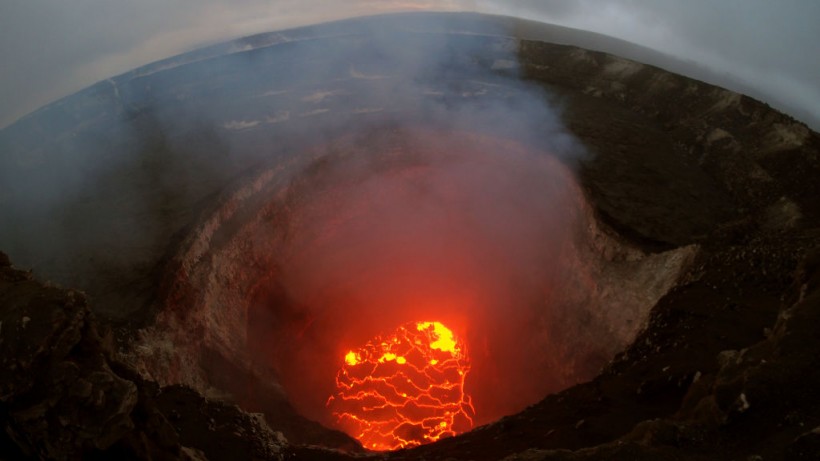(Photo : Photo by U.S. Geological Survey via Getty Images)
The world's largest volcano sitting on Hawaii's landscape has remained active for at least the last 700,000 years, but it has not had an eruption since 1984.
Since the mid-19th century, communities in east Hawaiʻi have been threatened by Mauna Loa lava flows. Rates of seismicity remain slightly elevated above long-term background levels in the planet's largest shield volcano above water - the Mauna Loa. As per the Hawaiian Volcano Observatory Weekly Update, this has not changed significantly over the past week.
Using GPS and satellite data to track shifts in the ground, scientists were able to model the lava flow inside the volcano and reveal the full danger of Mauna Loa, should it set off future eruptions, Science Alert reported.
A 'Sizable' Earthquake
Based on measurements of magma influx that have happened since 2014, researchers conclude that an earthquake of a certain size would likely trigger the next major eruption from Mauna Loa.
"An earthquake of magnitude 6 or greater would relieve the stress imparted by the influx of magma along a sub-horizontal fault under the western flank of the volcano," Bhuvan Varugu, a geologist at the Rosenstiel School of Marine and Atmospheric Science at the University of Miami, said in a press release accompanying the 2021 study published in Scientific Reports.
About 0.11 square kilometers of new magma flow was measured in the volcano chamber between 2014 and 2020, changing direction according to pressure. Together with surface lava flows and ground shifts along the fault the volcano, magma intrusions change the shape of the volcano and increase the likelihood of an eruption.
Also read: The World's First 'Synthetic Embryos' Created by Researchers Bypass the Sperm and Egg
Will the Volcano Erupt in the Near Future?
According to data, Mauna Loa is already under a "pretty heavy" topographic load and magma could propagate laterally through the rift zone. Although magma intrusions will increase the likelihood of an earthquake and an eruption, scientists say "it is likely, but not required".
"An earthquake could be a game changer," explained marine geologist Falk Amelung from the University of Miami. "It would release gases from the magma comparable to shaking a soda bottle, generating additional pressure and buoyancy, sufficient to break the rock above the magma."
Additionally, researchers think that the lack of movement under the volcano's western flank is where an earthquake might be due.
Amelung said that predicting future eruptions could be a "fascinating problem", and an incredibly complex task at the same time, with a lot of variables to estimate. However, future modeling can be done using careful magma mapping strategies like the one in the 2021 study.
"We can explain how and why the magma body changed during the past six years. We will continue observing and this will eventually lead to better models to forecast the next eruption site," Amelung promised.
According to recent observations during the past week, HVO seismometers recorded approximately 106 small-magnitude (below magnitude 3.0) earthquakes beneath the summit and upper-elevation flanks of Mauna Loa, the majority of which occurred at shallow depths less than 15 kilometers (9 miles) below sea level.
Related article: Cave Explorers Discover the Deepest Known Cave in Australia
© 2024 NatureWorldNews.com All rights reserved. Do not reproduce without permission.


![Tsunami Hazard Zones: New US Map Shows Places at Risk of Flooding and Tsunamis Amid Rising Sea Levels [NOAA]](https://1471793142.rsc.cdn77.org/data/thumbs/full/70325/280/157/50/40/tsunami-hazard-zones-new-us-map-shows-places-at-risk-of-flooding-and-tsunamis-amid-rising-sea-levels-noaa.jpg)



